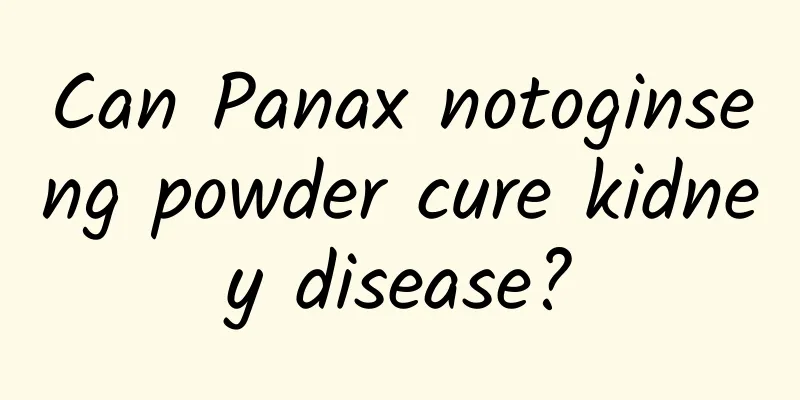Complications after hemodialysis

|
When a person suffers from severe renal failure, hemodialysis is required. The main purpose of hemodialysis is to purify the blood in the human body and then input it into the body. Therefore, it is a very complicated technology and is very harmful to the human body. However, it has a very obvious effect in treating renal failure. There are also certain complications after hemodialysis. Next, I will introduce to you the complications after hemodialysis. 1. Hypertension Symptoms : The blood pressure is normal or high before dialysis, and is characterized by an increase in blood pressure during dialysis, which mostly occurs in the middle and late stages of dialysis. There are also cases where the blood pressure increases from the beginning of dialysis and tends to increase gradually. Before dialysis, the patient's blood pressure is generally in the range of 120-165/90-105 mmHg, and sometimes it can rise to 165-225/90-135 mmHg. Mild cases simply involve high blood pressure without obvious discomfort, while moderate and severe cases may cause symptoms such as nausea, vomiting, headache, and chest tightness. A small number of patients terminate hemodialysis early due to severe discomfort. Treatment: Hypertension is common during dialysis and is generally believed to be the result of the combined effects of multiple factors such as water and sodium retention, activation of the renin-angiotensin-aldosterone system (RAAS), sympathetic nerve activation, endothelial cell dysfunction, and parathyroid hormone. From the pathophysiology of ESRD hypertension, it can be seen that the hypertension of most hemodialysis patients is caused by water and sodium retention. More than 80% of dialysis patients can restore their blood pressure to normal by reducing "dry weight" through enhanced ultrafiltration without the use of antihypertensive drugs. Therefore, whether dry weight can be achieved after dialysis is a key factor in controlling blood pressure in dialysis patients. For some patients who cannot tolerate ultrafiltration or whose blood pressure is difficult to control due to excessive water intake and who cannot reach dry weight, or who have reached dry weight but still have moderately elevated blood pressure, prolonging the dialysis time or increasing the dialysis frequency, or changing the dialysis method such as hemodiafiltration, hemofiltration, high-flux dialysis, hemoperfusion, etc. can be considered to achieve the purpose of reducing dry weight and controlling hypertension. When the volume load of ESRD hemodialysis patients reaches dry weight, it drops to a critical level, but some patients still need medication to control their blood pressure. Drug options include renin angiotensin system inhibitors (RASIs), such as ACEIs/ARBs, calcium channel blockers (CCBs), and beta-blockers alone or in combination. Rational use of drugs should follow the following principles: 1. Combination of drugs, increased efficacy and reduced adverse reactions; 2. Beneficial to reducing or alleviating complications; 3. Selecting long-acting preparations, taking once a day, and improving compliance; 4. Try to select drugs that are not removed by dialysis. In view of the protective effects of RASI on target organs such as the heart, brain, kidneys, and blood vessels, it is currently recommended as the drug of choice. However, it is important to monitor the patient's blood potassium to prevent the occurrence of hyperkalemia. Bilateral nephrectomy or renal artery embolization is becoming less commonly used because of its significant disadvantages. Prevention: The fundamental measure to prevent the occurrence of hypertension is to ensure that the patient's dry weight truly meets the standard, regularly assess the patient's volume load, adjust the dry weight in a timely manner, strengthen patient education, the number of dialysis sessions per week must not be less than 3 times, and the weight between dialysis sessions should not exceed 3-5% of the dry weight. If blood pressure tends to rise, antihypertensive drugs can be temporarily given for treatment, but the fundamental preventive measure is to accurately assess the patient's dry weight and, based on individual patient differences, extend the hemodialysis time, increase the dialysis frequency, or change the dialysis method. 2. Low Blood Pressure Symptoms: Interdialytic body weight exceeds dry body weight by 5% to 12%. It usually occurs near the end of dialysis, and manifests itself with symptoms such as dizziness, nausea, vomiting, pale complexion, difficulty breathing, arrhythmia, and a slight drop in blood pressure to below 90/60 mmHg. Symptomatic hypotension may occur throughout the dialysis process in elderly and seriously ill patients. Treatment: For patients who experience hypotension during multiple dialysis sessions, most of them are caused by too little effective blood volume. The patient's dry weight should be re-evaluated to determine whether the dry weight is set too low or the ultrafiltration volume is too high. If hypotension occurs during dialysis, the patient should immediately lower his head, stop ultrafiltration, and supplement with 100 ml of 0.9% sodium chloride solution or 60 ml of 50% glucose. If the blood pressure improves, ultrafiltration should be gradually resumed, and blood pressure changes should still be closely monitored during the period; if the blood pressure does not improve, volume expansion treatment such as normal saline and hypertonic glucose should be given again to slow down the blood flow rate. If blood pressure continues to drop rapidly after the above treatment, pressor drugs should be used, and further examination should be conducted to determine whether there are other causes (such as pericardial tamponade) or other appropriate measures should be taken, and hemodialysis should be stopped. Prevention: Patients undergoing dialysis for the first time should eliminate their worries and fears, and the dialyzer and dialysis tubing should be pre-flushed with saline to avoid discomfort due to reduced blood volume. Strengthen education for patients, the number of dialysis sessions should not be less than 3 times per week, the body weight between dialysis sessions should not exceed 3-5% of dry body weight, try not to dehydrate more than 2kg each time, reduce ultrafiltration volume, regularly assess the patient's volume load, adjust dry body weight in time, correct anemia, hypoproteinemia and other factors that cause hypotension, change the blood purification method, and use high and low sodium sequential dialysis or blood filtration as an effective method. 3. Muscle spasms Cause: Factors that cause muscle spasms in patients include the use of low-sodium dialysate or too fast ultrafiltration rate, hypovolemia, or acid-base imbalance, electrolyte imbalance, hypotension, etc. Treatment: For patients whose weight increases too quickly during dialysis, the dialysis time needs to be extended and the dialysis frequency needs to be increased to prevent problems such as insufficient effective circulating blood volume and excessive and rapid ultrafiltration dehydration. If muscle spasm symptoms occur, an appropriate amount of hypertonic glucose solution, saline solution or mannitol solution should be injected according to the patient's specific situation. At the same time, the patient's muscle spasm area should be massaged and squeezed to relieve the patient's muscle spasm symptoms. |
>>: Can normal people do hemodialysis?
Recommend
What are the effects of Prince Ginseng?
Pseudostellariae pseudoginseng is a common Chines...
How to remove heart surgery scars?
Heart disease is a disease that has a very big im...
Can gastritis cause esophagitis?
Inflammation is a common symptom that people may ...
What are the advantages and disadvantages of cupping?
Everyone may have heard about the advantages and ...
Ichthyosis
Skin diseases are very common. They are not very ...
How many bowel movements per day is normal
Changes in lifestyle habits will always affect pe...
What are the symptoms of neuralgic headache?
Neuralgia is a type of tension headache, which is...
What is the reason for sweating on the forehead when soaking feet?
Foot soaking is the most economical and cost-effe...
Why do I feel tired during ovulation?
The ovulation period is a stage in a woman's ...
Does Cordyceps sinensis have aphrodisiac effects?
Cordyceps sinensis is very precious and is a good...
Aloe vera for babies with eczema
Aloe vera is a herb that can be cultivated and gr...
The effect of drinking water boiled with Artemisia jujube
The benefits of drinking water boiled with Artemi...
Pain beside ear when opening mouth
Due to the fast-paced life and pressure from work...
Is it OK to eat apples for three consecutive days?
Many people say that eating apples will not make ...
What to do if a woman is very suspicious
In life, many women always suspect that their boy...









